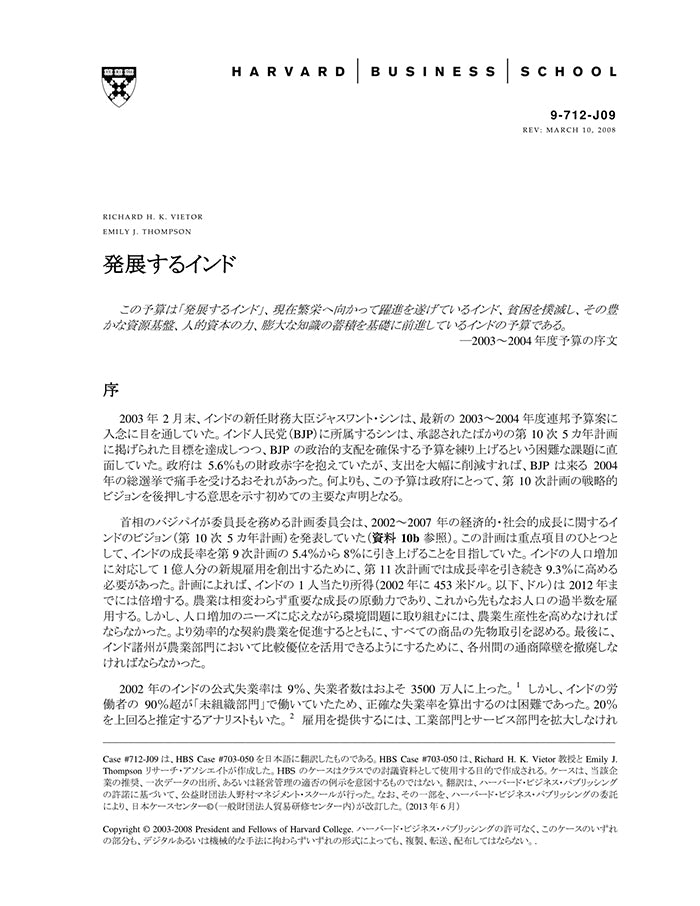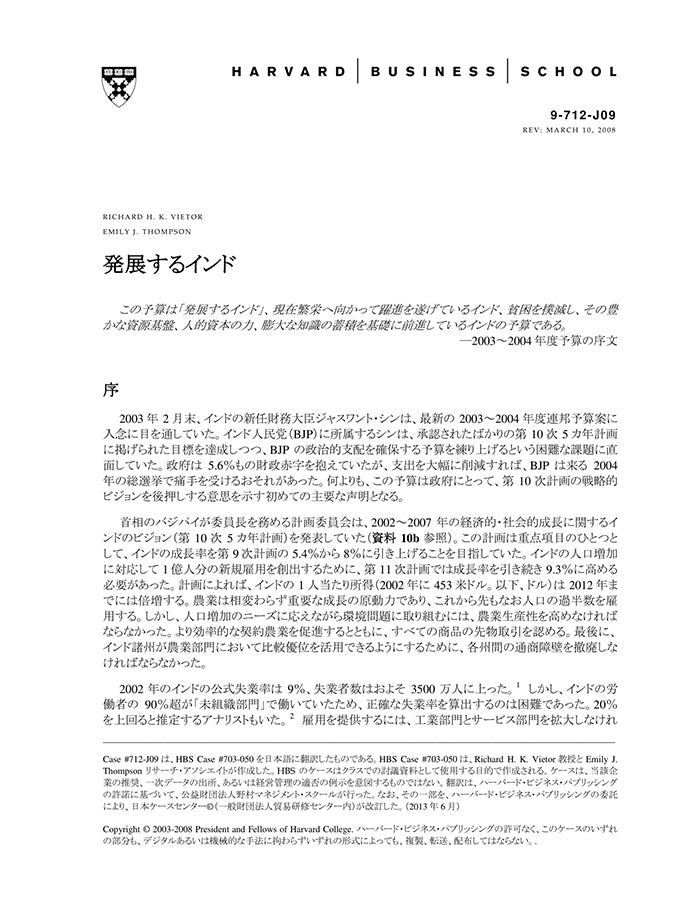発展するインド
受取状況を読み込めませんでした
1992年以降、インドはほぼ毎年6%の成長を遂げていたが、2003年の財政破綻以降、輸入代替を断念して、徐々にワシントン・コンセンサスを採用していった。現在のところ、財務統制と競争の障壁の重荷は減り、インフレは緩和、経常収支はバランスが取れていた。しかし財務大臣は、巨額の財政赤字や外国直接投資(FDI)を阻害するとみられる、継続的なパキスタンとの衝突などの困難に直面していた。彼が直面しているのは、インドが(2004年の選挙を前に)こうした赤字を削減することができるのかどうか、あるいは、インドの起業家とハイテクを扱う南部の州が窮地を救ってくれるのを望んで、赤字をスライドさせるのかという問題だった。 By 2003, India had been growing at almost 6% annually since 1992, after it suffered a financial collapse, abandoned import substitution, and moved gradually to adopt the Washington Consensus. Now, financial controls and competition barriers are less burdensome, inflation is lower, and the current account is balanced. However, the finance minister faces difficulties with massive fiscal deficits and continuing disturbances with Pakistan that seem to deter foreign direct investment (FDI). The question facing him is whether India can reduce these deficits (in the face of a 2004 election) or whether to let them slide, hoping that India's entrepreneurs and high-tech southern states will carry the day.
【書誌情報】
ページ数:29ページ
サイズ:A4
商品番号:HBSP-712J09
発行日:2003/6/30
登録日:2013/7/8


